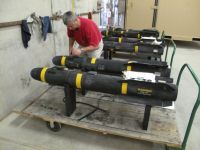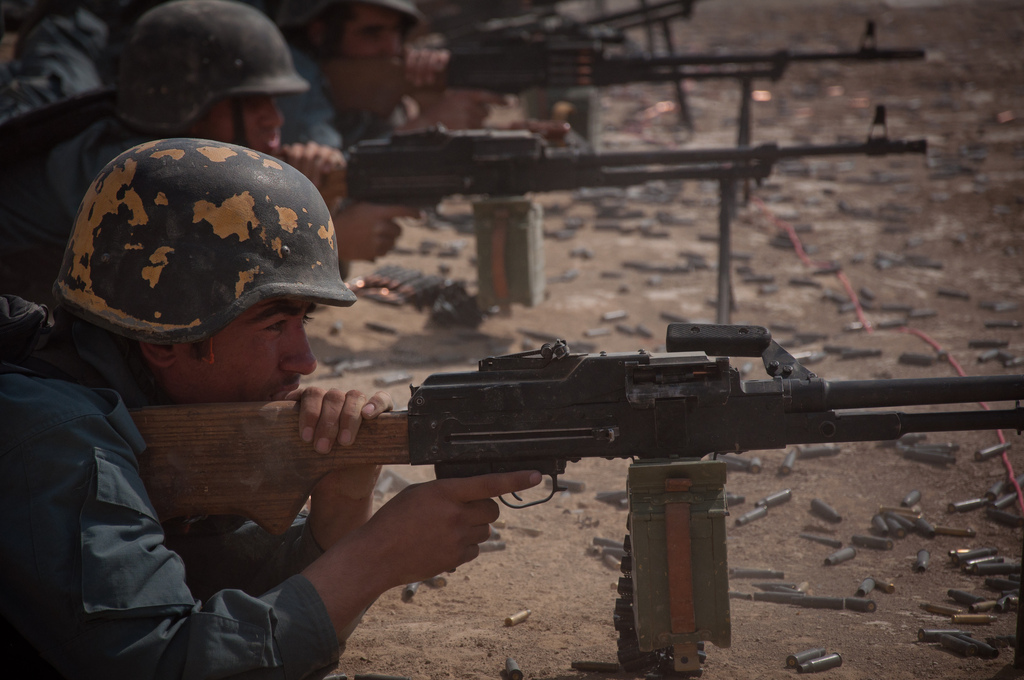CAMP AS SAYLIYAH, Qatar — As equipment is transitioned out of Iraq, perhaps none is more critical than the HELLFIRE missile system. Since the drawdown began, more than 750 HELLFIRE missiles have been shipped to the 402nd Army Field Support Battalion-Qatar, where they are serviced, tested and repaired by the HELLFIRE Forward Test and Repair Facility.
 |
| Click to enlarge |
 |
| Click to enlarge |
The HELLFIRE team returned nearly half of those missiles back into theater combat stocks, said Lt. Col. Michael Brown, director of Acquisition, Logistics and Technology, for the 402nd Army Field Support Brigade.
“Because of this facility, turnaround times for HELLFIRE missiles are now less than 90 days. That’s a cost avoidance of more than $39,000 per missile. Plus, this is reducing the workload at stateside depots by about 58 percent,” Brown said.
The HELLFIRE missile is the primary precision air-to-ground weapon used by joint and coalition services to protect ground forces and non-combatants. More than 11,000 have been fired in combat operations since 2001.
“The HELLFIRE facility in Qatar is saving the Army money, saving transport time and optimizing readiness by testing, repairing and resetting missiles in a forward depot,” Brown said.
Acquisition officials estimate the HELLFIRE facility in Qatar will save the Army more than $55 million during the next three years.
“This is a great initiative to return critically needed assets back to the warfighter more efficiently and with less downtime than a full depot maintenance effort,” said Susan Carlson, deputy chief of staff, Army Logistics (G‑4), after a recent visit.
“To date, assets returned have gone back into the hands of the warfighter and been used against insurgents and other hostile elements, saving U.S. and coalition lives in the process. To be able to turn them around in three-four months vice two-three years saves the Army money, increases our readiness and gets the best systems to the fight,” Carlson said.
Brig Gen. Karen LeDoux, commanding general, Army Materiel Command-Southwest Asia/G‑4, U.S. Army Central-Kuwait, also visited the Qatar site and keyed in on the readiness aspect of the facility.
“Operations here have resulted in a significant increase in the availability and readiness of the Joint Warfighter’s air-to-ground missile of choice,” said LeDoux.
The Qatar HELLFIRE Forward Test and Repair Facility was recognized in 2011 by the iSixSigma community for the largest breakthrough improvement project in the customer service category.
That was a direct result of a Lean Six Sigma Black Belt project, which is an aggressive tool used by leaders of industry to reduce waste and improve effectiveness of processes. As the Defense Department faces a future of budget cuts, the HELLFIRE program is already a frontrunner in practicing lean.
“The efforts by this highly talented group in the 402nd AFSB have embodied the best of what Lean Six Sigma initiatives can do to support our warfighters, by doing more, without more,” said LeDoux.
Source:
US Army

 von
von 